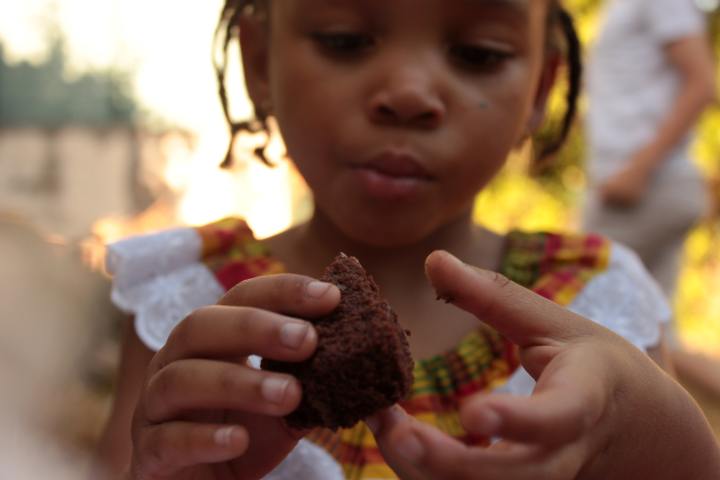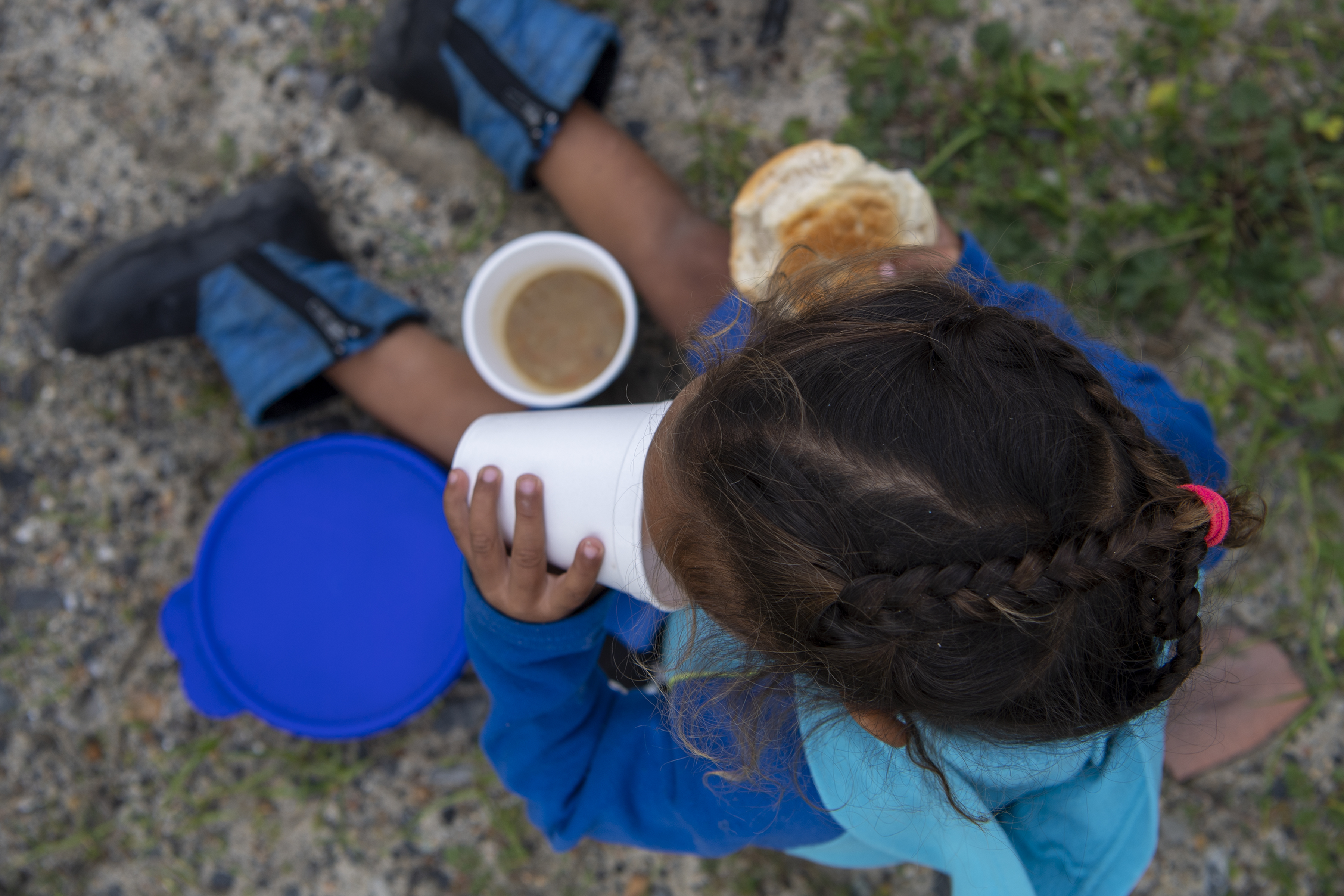
ADOPTION & NUTRITION
Understanding and remedying food challenges for adopted children

Are you (thinking about) adopting a child? What you need to know about nutrition and eating behaviour during and after life in an orphanage.
There are many reasons to consider adopting a child, not least the incredible fact that it will change the lives of orphaned children in South Africa (the number of children affected by orphanhood has increased due to Covid-related circumstances, according to this study.)
No matter what your reasons may be, the process of adopting is not an easy one, nor is it a decision to be taken lightly; it is a delicate procedure, one that should be handled with the utmost care. Perhaps you have already made the decision to adopt from one of the many agencies or children’s homes in South Africa and are trying to gather as much information about what this might look like as possible.
In this article, we look at what parents and prospective parents should know about caring for their adopted child’s nutritional needs after life in a home.
The good news
According to Dr Janet Lumb, a paediatrician who has been working closely with children’s homes in Gauteng for over 18 years, homes and adoption agencies that are formally registered are generally small, well maintained and organised.
“I can’t speak for every children’s home in the country”, says Lumb, “but by and large, the homes feed the children a very balanced diet, whether they are affluent centres, or relying heavily on donations.”
While these homes certainly take in malnourished young ones, “these babies tend to recover quickly and are well nourished by the time they are put up for adoption.” This said, there is some evidence pointing towards early starvation having a mal effect on a child’s immune system, growth rate, and learning abilities for the rest of their lives, but this is far less likely in very young babies.
Lumb continues, “the vast majority of our homes have about twelve babies and toddlers in them, and there is a lot of personalised care.”
This standpoint is mirrored by Professor Priscilla Gerrand, who worked in the Johannesburg child protection unit (which included an adoption section) for ten years before becoming a faculty member of the Wits social work department in 2008.
“Most of our prospective children who become available for adoption are brought into adoption agencies and homes at a very early age, and these homes have to meet certain standards in order to be registered. They are checked regularly.”
Babies are generally very adaptable. “South African adopters nearly always adopt younger children, from babies to early toddlers,” says Lumb. “These babies haven’t developed major attachment issues or physiological issues yet,” which, Lumb asserts, would be the most likely reason for unhealthy behaviour surrounding food.
What to expect
If you are a South African citizen and are adopting through a registered home or agency in South Africa, your child is likely to be very young and well taken care of.
Both Lumb and Gerrand agree that probably the biggest nutritional/eating challenge for most adopters is the period of transition when the child is first introduced to their new home.
“They will be used to a certain environment, a certain care given directly from a particular caregiver,” says Gerrand about babies in children’s homes (especially those who have been there for longer). “Often when they go into a new environment, it does take time to adapt.”
Lumb asserts that “children’s homes are quite regimented with their eating schedules. They have strict meal and bottle times. Any child who is coming out of that environment is very in tune to when exactly they should be getting their bottle or food.”
Gerrand adds that some babies will be fed very different food from what your household might traditionally consume, but “even if the babies come from a totally different cultural background and have been fed different food than what you generally eat in your household, as long as what you are feeding them is healthy and nutritious, the babies will adapt.”
Frequently, these changes do come with a few initial stomach issues. Lumb says “in the early weeks, the first week or two, toddlers and babies often have diarrhoea, which we are sure is just related to a big change in diet. And also, a stress element. As wonderful as adoption is, it’s also stressful.” This initial stomach upset almost always “self resolves,” says Lumb.
Importantly, parents should know as much information about their child’s diet and eating schedule as they can prior to adoption. Most homes and agencies will have what Gerrand calls the “academic record” of the child’s medical history, which would include things like vaccination records, as well as “up-to-date information on what foodstuffs the child needs and has been receiving”.
“The homes I usually deal with,” says Lumb, “are required to fill in a very long and detailed questionnaire about what exactly the child needs, wants, likes, doesn’t need, doesn’t want or doesn’t like, and when exactly everything happens. If the home doesn’t supply this information from the outset, then prospective adopters should request it.”
This is essential knowledge to have because, according to Lumb, “parents should stick to the eating regime very closely in the beginning, and then gradually begin adjusting it to suit their own family needs.”
Go slow
It is imperative that changes in this transition period are enacted very carefully and gradually. “You have to experiment a little. It’s a slow process,” says Gerrand. “The initial bonding will take a good amount of time. It’s about being gentle and patient.”
Remember that your child is being exposed to new smells, new faces, a new cot — there is so much to adapt to.
This goes for parents, too. Be gentle on yourself as well as your baby, says Gerrand. “Adoption can feel very pressurised. The adopters might not be used to taking care of a child on a day-to-day basis. They have to get used to crying at night. Or maybe they feel as if they can’t seem to make the child relaxed or settled. It is an emotionally demanding and draining period.”
Hiccups, tantrums, sleepless nights are all a normal part of this process. They are natural growing pains (excuse the pun.)
Relax and be flexible
Lumb reminds us that early toddlers are at a very difficult stage for eating. “Whether eating issues are related to the adoption or not will be questionable. Fussiness is normal. Very few children, especially in the 18-month – three years age group, when kids are at their most difficult and opinionated are going to follow a perfect diet plan.”
For this reason, she suggests that parents try to the best of their ability to “just relax and be flexible, let them [the adopted children] eat what they are going to eat.” As long as it’s nutritious and healthy (not too high in sugar, and including vital nutrients), then your child’s diet can be fairly flexible. “Just try to be calm,” says Lumb, “and things should balance out in the end.”

Children receive warm soup on Youth Day in Seawinds. Image: Supplied
If you are truly worried about your child’s eating habits, then the main thing to check is their growth rate. “If a child is refusing certain foods but still growing steadily, then there is no real cause to worry,” says Lumb. But, if on the other hand, “a baby is not growing in that age group [18 months – three years], if they are losing or slowing down their weight gain, then you need to talk to a paediatrician and see if there is a medical problem.”
Educate yourself and get support
As both Gerrand and Lumb repeat, adoption is not an easy process. There will be very difficult moments and knowing pre-emptively about these difficulties is imperative.
Further, if you are struggling in the first few years after adopting a child, Gerrand reminds us that “there are aftercare services that you can reach out to as a parent.” One example is Abba Adoptions after adoption services.
More informal groups and communities can be extremely helpful too. According to Gerrand, there are a lot of specific support groups to be found on Facebook. “That way parents can share what they have learnt in managing different challenges. It’s a great support system. Like most things in life, if you can identify with others who are dealing with similar challenges, whether social or nutritional, it can be easier to work it out together.”
And lastly, says Gerrand “if none of these works out, you are allowed, as a parent, to go back to the temporary safe care that your child was in [the home or the agency] and say, ‘I’m struggling, what should I do?’ They could, knowing the child better, knowing the child’s dietary habits, have solutions.”
Aren’t thinking about adopting, but want to help?
To drive the message home, adopting a child is a huge responsibility, one that should not (and cannot) be taken lightly. If you are not feeling quite ready for it, there are countless other ways that you can be of help to the abandoned children of South Africa without actually adopting.
For example, donate or volunteer at Hearts that Hope. Alternatively, help Door of Hope build safe spaces where vulnerable or crisis-stricken mothers can place their babies so that they are guaranteed care and nurture. The organisation also offers the option to “adopt a crib” so that you can support and closely follow a specific child’s progress and story. Or get involved in similar ways at Abba Adoption agency. These are just the tip of the iceberg in terms of ways you can help.
Further, it is important to note that while most registered adoption agencies and children’s homes in South Africa are professionally run and maintained and do wonderful work taking care of thousands of abandoned children, there are many more orphans who fall through the cracks. The less-regulated foster care system in place, as well as adoptions that are done within communities, are where real problems arise, says Gerrand. Read more about these children, the most vulnerable of us all, who the systems in place are truly failing, in this article by Dee Blackie.
Major points to take away
Registered adoption agencies and children’s homes in South Africa are usually small, well maintained, and organised. At large they will take excellent care of orphaned babies that come under their jurisdiction.
Most South African adopters will be adopting children between the ages of 18 months – three years, which means that these children should adapt to changes in how they are being fed. That being said, the transition from institution to family home is not an easy one and needs to be made very gradually and carefully. Parents should make sure to gather as much information about their child’s diet and eating habits as possible prior to adoption.
Moving slowly, being patient and gentle, and trying to keep calm are all very important. This is a tricky age group to feed in general, and as long as your baby continues to grow and eats a generally healthful diet, everything should balance out in the end.
If you do struggle, remember that there are always ways to get support, whether that be through an institution, or a less formal route, don’t be afraid to ask for help.
If you’re not adopting, there are countless ways that you can donate or volunteer to the cause too. DM/ML
In case you missed it, also read How to create a healthy eating plan for your children


















 Become an Insider
Become an Insider
Comments - Please login in order to comment.